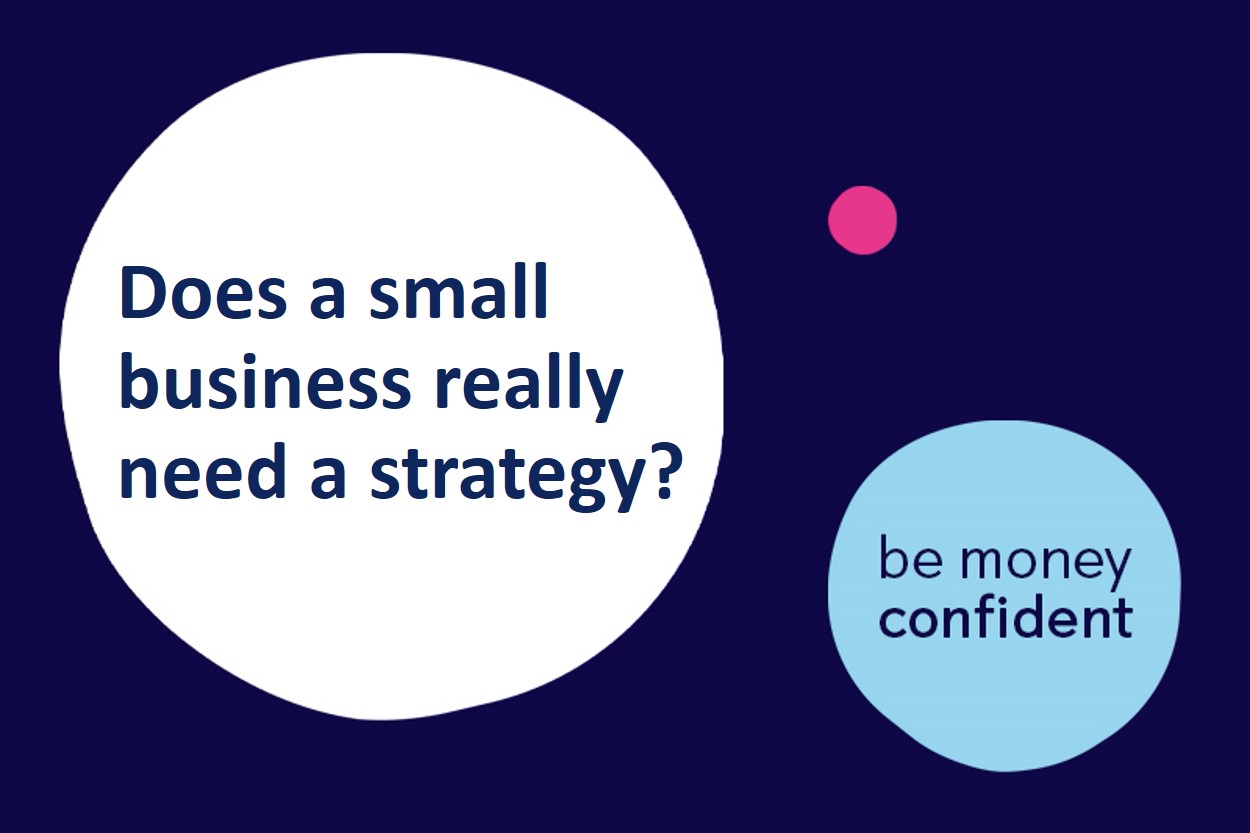Together we can end domestic abuse.
Does a small business really need a strategy?

Does a small business really need a strategy?
January 2022
Strategic planning might sound a bit over the top if you’re a tiny business. But how about if we put it another way. Do you want to get your business to where you want it to be? Of course you do. Yet many small business owners overlook strategic planning. Here we demystify strategy and give you some hints, tips and useful links.
What is strategy, anyway?
Strategy is basically a bit of a fancy word for taking a look at the long term bigger picture, and simply boils down to:
where do you want to get to?
what do you need to do in order to get there?
Don’t think strategy doesn’t apply to you because you’re small. Every business, from global corporations to the local coffee cart, needs to be able to decide what actions and decisions are needed to achieve their goals.
Why do I need one?
Your strategy doesn’t have to be long-winded but having one will bring several advantages to your business:
Better planning - identifies key steps to take to reach your goals
Identifies strengths and weaknesses – highlights areas to improve and exploit
Makes you more efficient - plan ahead to avoid costly mistakes
Gives you more control - make sure you’re on track to achieving your goals
Boosts morale – everyone knows their role and feels part of the ultimate objective
We know it can be difficult to put it all down in writing if you’ve not created one before, so here are a few things to help you get started.
Turning a blank piece of paper into a strategy
Getting a good business strategy together involves taking a step back and thinking about the business as a whole. Here are some key components:
1. Vision and objectives
This may feel like jargon dreamt up in executive offices but put simply the vision is the picture in your head of where you see your business at some point in the future. And the objectives are more quantifiable goals like sales or number of customers.
With a vision you can then create a plan for what needs to be done, how, by whom and when.
2. Core values
These are your principles. The way you do business. It can decide the things you don’t do, as much as the things that you do. Examples could be: diversity, fairness or teamwork.
You may think, ‘why do I need this as long as the business keeps selling?’. But in the long term, having defined core values keeps everyone pulling in the same direction as a team, creates a good team feeling, and benefits the hiring process by attracting employees who are the right fit for your organisation.
3. SWOT analysis
A SWOT analysis is a technique often used to assess a business by splitting into 4 parts – strengths, weaknesses, opportunities and threats. Write down all the things that fall within these categories. You can open this up to employees, or even ask suppliers and customers.
STRENGTHS What you are good at? What is unique about you? What gives you an advantage over competitors? |
WEAKNESSES Where could you improve? What are you lacking? |
OPPORTUNITIES What opportunities are open to you? From where could you generate extra sales? Could you tap into current trends? |
THREATS What could harm your business? What are your competitors better at than you? |
4. Tactics and resource
This details what needs to be done, how the work should be carried out, by whom, and what they need to do their job. The point of this is to make sure everything is done efficiently saving you time, effort and in the end money. Also, it will show up any shortages in resources, whether that is staff or stock.
5. Measurement
This is how success is measured, for example total sales, number of customers, cost per sale etc. It should include a way to track your business performance in relation to the targets to stay on track.
A good strategy will help keep you and your staff focused on your ultimate objective and provide the most efficient – and hopefully enjoyable – way of achieving it.
Things to watch out for
Include a financial plan – so you can see upfront if you’ll make money
Be agile - things change and so your strategy may need to change too
Put in milestones - review performance at intervals to make sure you’re progressing
Write it down – so others can share in it
Don’t over think – don’t forget to get on and do stuff
Let’s talk. We’re Britain’s bank for small businesses. Our Business Banking experts are here to help you with your business, with 25 months’ free day-to-day business banking, as well as 1 year’s free expert business advice from Enterprise Nation. Call 0345 835 3858 or contact us via your business bank account.
